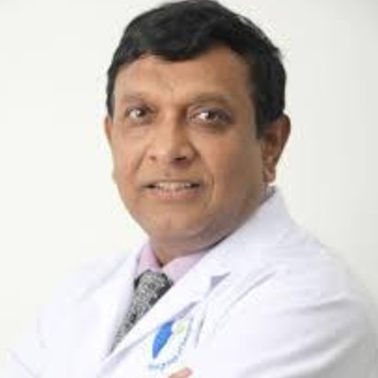Focused Ultrasound for Fibroids: Definition, Mechanism, Eligibility, Process, Advantages, Risks, and More
Learn about focused ultrasound for fibroids, a non-invasive treatment that uses sound waves to shrink uterine fibroids. Explore its mechanism, eligibility, procedure, benefits, risks, and more for effective symptom relief.

Written by
Last updated on 3rd Jul, 2025
Uterine fibroids refer to the non-cancerous growths in the muscular wall of the uterus. These tumours are common among women, mainly during their reproductive years. Focused ultrasound (FUS) is an innovative, non-invasive treatment that uses concentrated sound waves to target and treat conditions such as uterine fibroids.
This article discusses the definition, mechanism, eligibility, procedure, advantages, disadvantages, and more on focused ultrasound as a treatment for uterine fibroids.
What is Focused Ultrasound?
Focused ultrasound (FUS) is a non-invasive medical treatment that uses focused ultrasound energy to precisely target specific areas within the body or brain. It is a safe procedure that does not require incisions, general anaesthesia, or exposure to ionising radiation, offering a minimally disruptive alternative to conventional surgical methods.
In this method, ultrasonic energy is concentrated within a specific region of the body. This creates heat, which destroys the targeted tissue.
For uterine fibroids, focused ultrasound disrupts the fibroid tissue without hampering the rest of the uterine structure.
The procedure is generally Magnetic Resonance (MR)-guided to ensure accurate targeting.
It is also involved in the treatment and research of conditions including essential tremor, brain cancer, Alzheimer's disease, severe depression, and Parkinson's.
Eligibility Criteria for Patients Suitable for Focused Ultrasound for Fibroid
Focused ultrasound is a low-risk treatment method that can be suitable for people who fit the conditions below:
Women in good health, aged above 21 years, with the capability to give informed consent before the procedure, are eligible.
Candidates must have an ultrasound or Magnetic Resonance Imaging (MRI)-confirmed uterine fibroid or adenomyosis that would respond to high-intensity focused ultrasound (HIFU).
Individuals must be able to communicate effectively with a nurse or doctor.
Eligible persons must be able to attend follow-up examinations.
Candidates must not have medical implants that are Magnetic Resonance Imaging (MRI)-incompatible, such as neurostimulators or pacemakers.
Step-By-Step Guide to the Focused Ultrasound Treatment
Here are the steps involved in the focused ultrasound (FUS) treatment for fibroids:
Step 1: Pre-procedure Preparations
The patient's head is shaved on the morning of the operation so that the head is optimally in contact with the ultrasound equipment. To drain the bladder, urinary catheterisation may be performed.
Heart rate and blood pressure, along with oxygenation levels, are regularly checked throughout the process. In addition, the Intravenous (IV) Catheterisation is established to provide seamless medication delivery.
Step 2: Positioning the Head Frame
A secure head frame is installed to keep the patient's head from moving during the entire procedure. This aids in the proper targeting of ultrasound waves. During placement on the MRI bed, the head frame is locked to prevent head movement when treatment is being carried out.
Step 3: MRI Scanning and Target Area Identification
The MRI bed slides in and out of the scanning area of the machine. Various MRI scans are used to see the location of the fibroids and also to get the exact target area for ultrasound treatment. Through MRI images, real-time feedback is received. This helps the medical team be sure of the area being treated accurately.
Step 4: Baseline Assessment
Before treatment begins, patients may be asked to perform tasks such as drawing spirals or writing their names to assist with assessing symptoms like tremors. This is done several times during treatment to show improvements or to verify that the treatment is being delivered to the site of the fibroid.
Step 5: Initial Ultrasound Pulses
Treatment begins with a series of short and less intense ultrasound pulses directed at the selected fibroid area. These pulses serve to confirm the correct target. The MRI images are reviewed to verify the exact area before proceeding.
Step 6: Gradual Increase in Ultrasound Energy
Once the targeted area is confirmed, ultrasound energy is gradually increased. The procedure progresses through stages, each involving an increase in energy delivered to the fibroid tissue. During the process, MRIs are taken to monitor the target temperature in the treated tissue for safety and accuracy.
Step 7: Continuous Monitoring and Adjustments
Throughout the treatment, the medical team keeps a close eye on the patient's improvement and adjusts the ultrasound energy as needed. The patients are frequently asked how they are feeling, and tasks to perform, like moving their hands or fingers repeatedly.
This helps check if there is any improvement in symptoms and further action. The treatment continues until the fibroid tissue reaches the desired temperature and a small lesion forms.
Step 8: End of Treatment and Post-Treatment Care
Some additional MRI scans are performed to confirm the procedure is successful. The post-operative phase is of short duration in which the individual's recovery is monitored to ensure they can resume their normal activities within a few days.
Consult Top Gynaecologist
Benefits of Focused Ultrasound Treatment for Fibroid
Following are the common advantages of focused ultrasound treatment for fibroid:
The process ensures faster recovery
There is a limited risk of infection
No implants or devices are introduced into the body, ensuring no long-term foreign objects
Radiation is entirely avoided, making the treatment safer for the patient
Only local anaesthesia is used in this process, lessening the risks and recovery time associated with general anaesthesia
It only targets the damaged tissue, leaving non-targeted healthy tissues untouched
Doctors can assess the efficiency of the treatment in real-time
Risks and Complications Associated with Focused Ultrasound Treatment for Fibroid
Here are the major risks and complications involved with focused ultrasound treatment for fibroid:
The sound waves can cause some sort of burning or pain on the skin near the abdomen.
In some instances, the heat produced by the sound waves might harm the other tissues and organs around the area.
Nerve damage can occur in the treated area. This may lead to temporary pains in the legs and back.
Another complication would be deep vein thrombosis, in which a blood clot forms in the legs or the back.
Sometimes, in rare cases, old symptoms may return even after a focused ultrasound surgery.
Current Research and Advances in Focused Ultrasound Treatment
Recent studies have found that magnetic resonance-guided focused ultrasound (MRgFUS) is effective in alleviating symptoms in 70-80% of patients. MRgFUS significantly reduces the size of uterine fibroids, serving as a non-invasive alternative to hysterectomy and myomectomy.
Clinical trials are currently underway to explore MRgFUS in other treatments, including the treatment of breast cancer, bony metastases, and functional neurosurgery.
Future developments are expected to refine its guidelines for treating larger or more complex symptomatic fibroids such as breast cancer, treatment of stroke, and prostate cancer. Thus, MRgFUS can be established as a versatile therapeutic tool in the coming years.
Conclusion
Focused ultrasound holds great promise for being an effective, non-invasive treatment instead of conventional methods of treating fibroids. Its advantages include reduced recovery time, minimal risk, and preserved fertility.
However, the procedure is not suitable for all women and may not result in the same outcome in fibroid characters. With continuous improvement in research and focused ultrasound, fibroid treatment is used to play a more significant role in many women's lives.
Consult Top Gynaecologist
Consult Top Gynaecologist

Dr Suseela
General Physician
5 Years • MBBS
Bengaluru
Apollo Medical Center, Marathahalli, Bengaluru
Dr. Sahana B
General Practitioner
3 Years • MBBS
Koppal
Khushi multi-speciality hospital, Koppal

Dr. Tripti Deb
Cardiologist
40 Years • MBBS, MD, DM, FACC, FESC
Hyderabad
Apollo Hospitals Jubilee Hills, Hyderabad
Dr. Gaddam Manoj
General Practitioner
1 Years • MBBS
Hyderabad
Aaradhya clinic, Hyderabad

Dr. Mainak Baksi
General Practitioner
13 Years • MBBS , MD (MPH)
Howrah
Mainak Baksi Clinic, Howrah
(50+ Patients)
Consult Top Gynaecologist

Dr Homeira Nishat
Obstetrician and Gynaecologist
34 Years • MBBS, Diploma in Obstetrics & Gynaecology
Bengaluru
Cure Hospital and Clinic, Bengaluru

Dr. Debashree Saha
Obstetrician and Gynaecologist
4 Years • MBBS, MS (Obstetrics & Gynaecology)
Kolkata
DR. DEBASHREE SAHA Clinic, Kolkata

Dr. Mona Yadav
Obstetrician and Gynaecologist
19 Years • MBBS, MD (Obstetrics & Gynaecology)
Dombivli
Nulife multispeciality, Dombivli

Dr. Sanjan Das
Obstetrician and Gynaecologist
15 Years • MBBS,MS
Bengaluru
Apollo Clinic, Sarjapur Road, Bengaluru

Dr. Soumya P
Obstetrician and Gynaecologist
6 Years • MBBS,MS (OBST & GYNAE)
Bengaluru
Apollo Clinic, JP nagar, Bengaluru